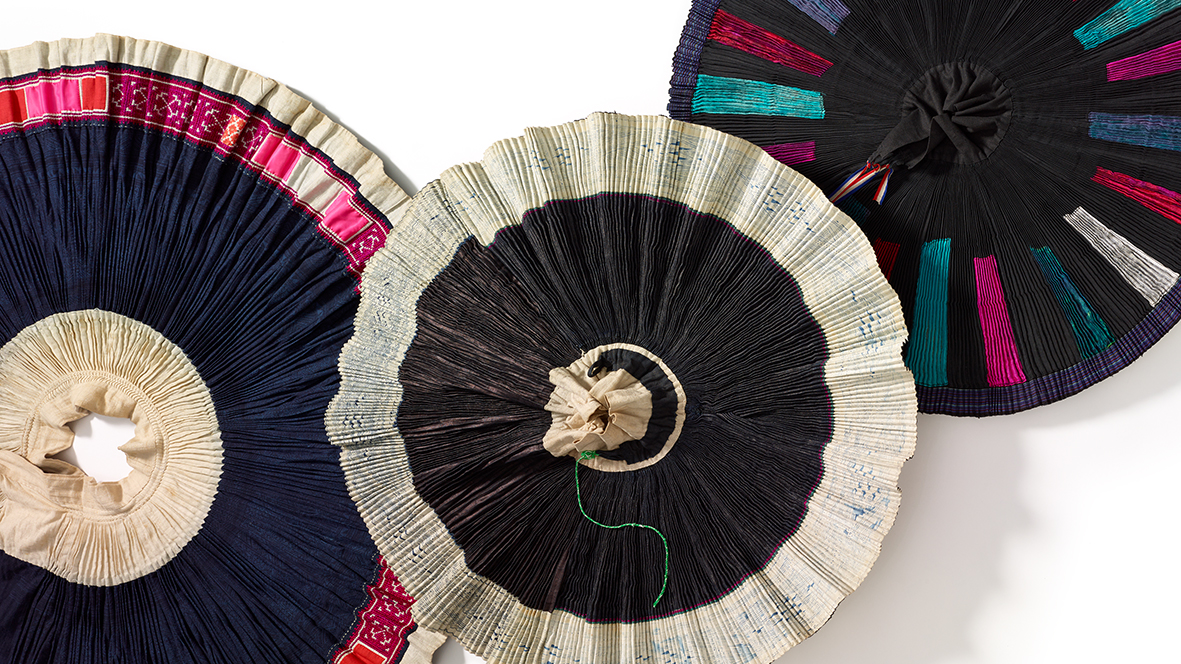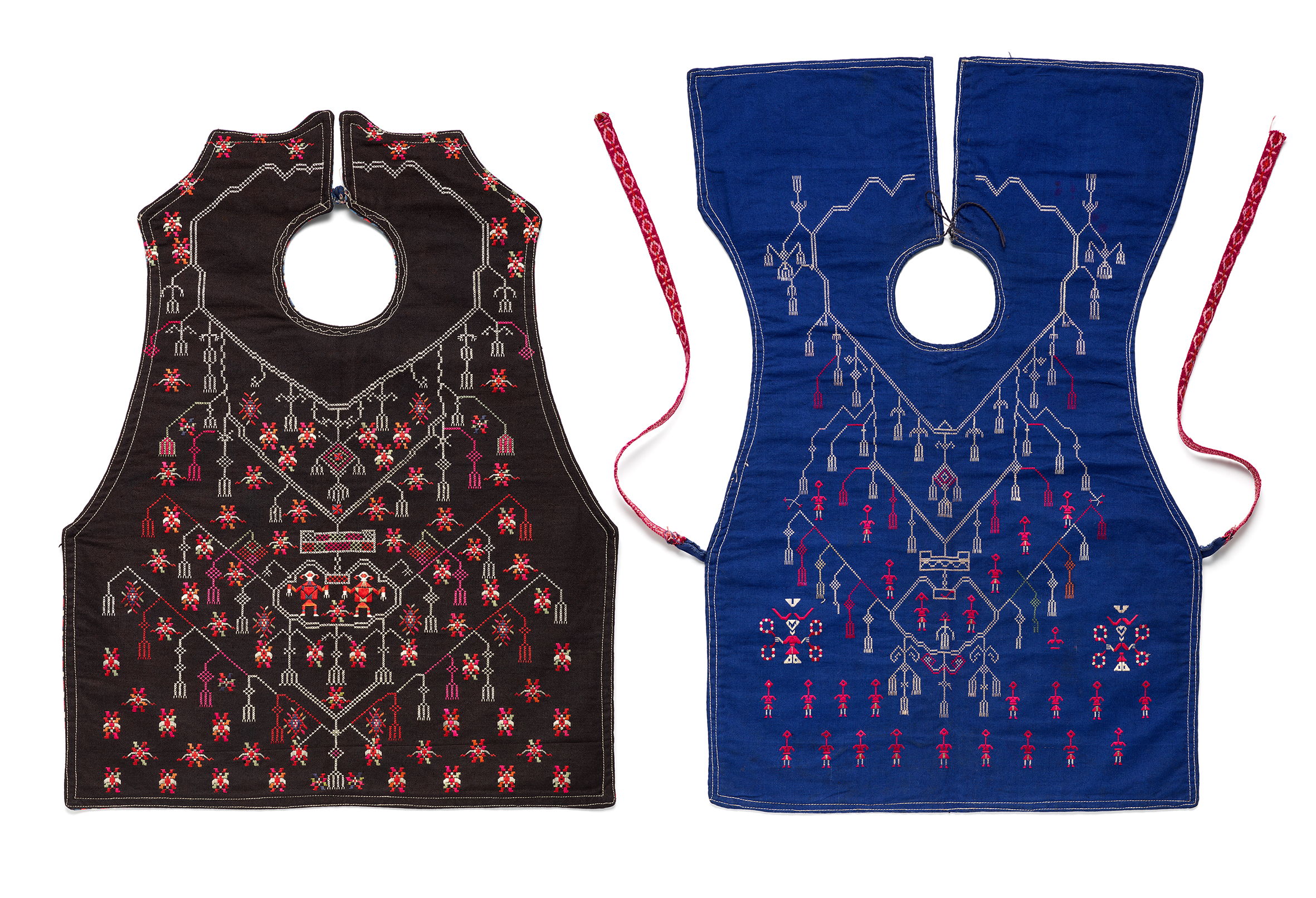Navigation auf uzh.ch
Navigation auf uzh.ch

The Hidden Complexities exhibition doesn’t open with fanciful colorful embroidery. Instead, visitors enter a kind of box that is entirely clad with indigo-dyed fabrics, the basic material which the Miao societies in Southwest China use to make their clothing. This opening to the exhibition was designed by Karola Kauffmann, who is a professional hand weaver, textile artist and former owner of the exhibited collection. “The various surface textures and the subtle shades of blue, violet and copper are meant to heighten the senses and to allow visitors to take a look at what’s behind the exhibits’ captivating exterior,” explains Kauffmann.
The diverse clothing culture and textile skills of the Miao societies are the focus of the first exhibition space. Visitors learn about various embroidery, pleating and appliqué techniques and can try their hand at some of them for themselves. Over the length of the exhibition, this will result in a collaborative new work.
Different exhibits highlight how the Miao craft has changed with time. For example, the Miao’s sewing utensils used to be kept in needle cases featuring elaborately folded, colorful compartments. Today, there are also sewing kits that contain custom-length threads and pieces of fabric along with step-by-step instructions. This side by side of old and new is a distinctive feature of contemporary Miao textile culture, and it is brought to life in the exhibition through a market scene typical of Guizhou province. The items displayed here cover the whole range from specialist needles to finished garments, and from machine-embroidered artificial silk to hand-sewn silk appliqués on cotton.

The passage between the first and second exhibition space is devoted to the outside perception of the Miao societies over time from a textile perspective. The term Miao has only been used since 1949 for distinct ethnic minority groups who today live mainly in Guizhou province. In addition to linguistic similarities, these people also share the same elaborate clothing culture. For centuries the region’s textile diversity has attracted the attention of travelers, writers and imperial magistrates alike. The exhibition presents three examples from different eras: Ancient illustrations for the emperor, Socialist New Year's posters from the 1950s, and contemporary tourist photographs of cultural events.
The second part of the exhibition focuses on the multilayered textile skills of the Miao women. Based on a selection of children’s clothes, the exhibition demonstrates the full range of weaving, stitching, appliqué and dyeing techniques, and the diligence in picking fabrics and motifs. The children’s garments are arranged opposite 16 variations of the characteristic Miao indigo-dyed pleated skirts, in various stages of completion. The pleated skirts, which depending on the number of pleats require considerable amounts of fabric, are the clothing item that links all Miao women
Between these two key components of Miao clothing culture, visitors can explore the manufacturing process, dyeing techniques, style and design elements, and dive into the vast expertise and artisanship that lie beneath the dazzling arrangements of color and patterns. “Each exhibit is unique and carries meaning,” explains Martina Wernsdörfer, Chinese studies scholar and exhibition curator. “Wealth, social status and region of origin as well as individual taste and creativity are all expressed through the clothes.” The exhibition also covers current technological and social change processes and invites visitors to reflect on their diversity.
